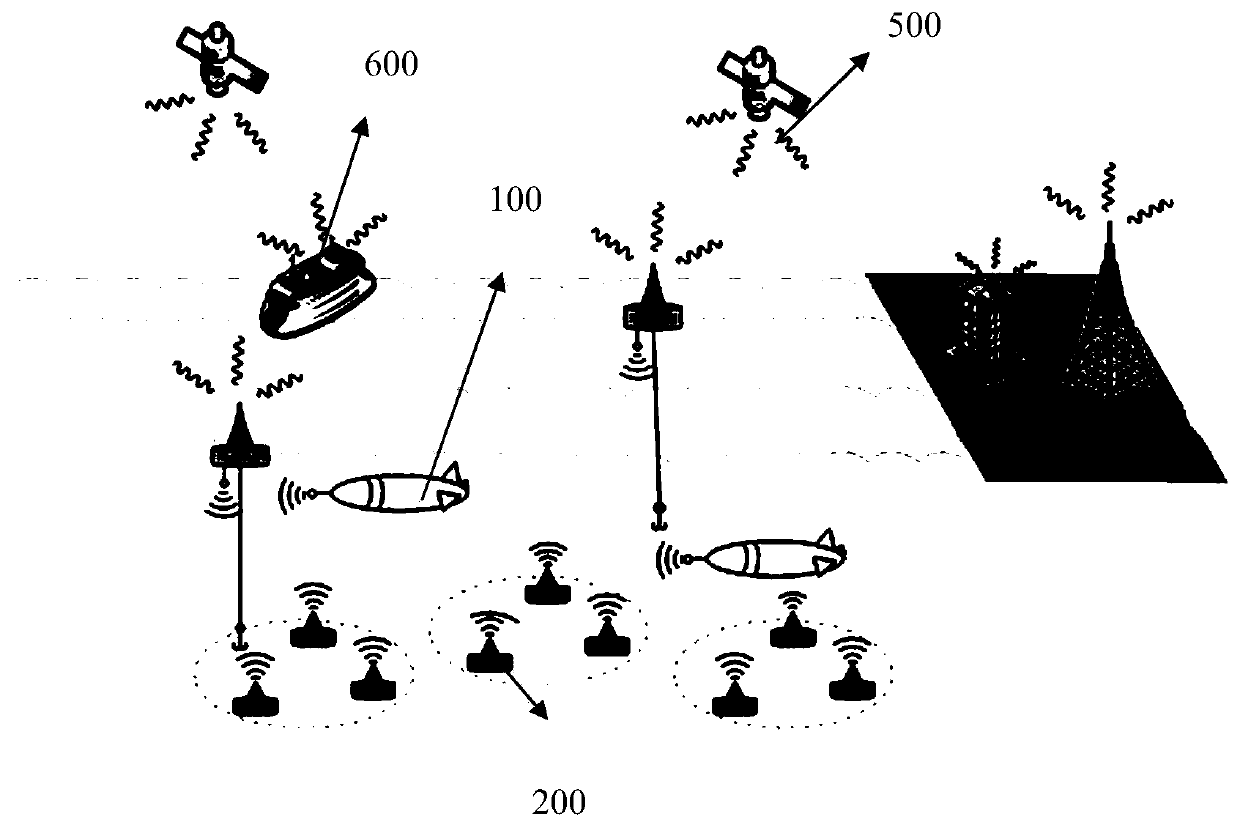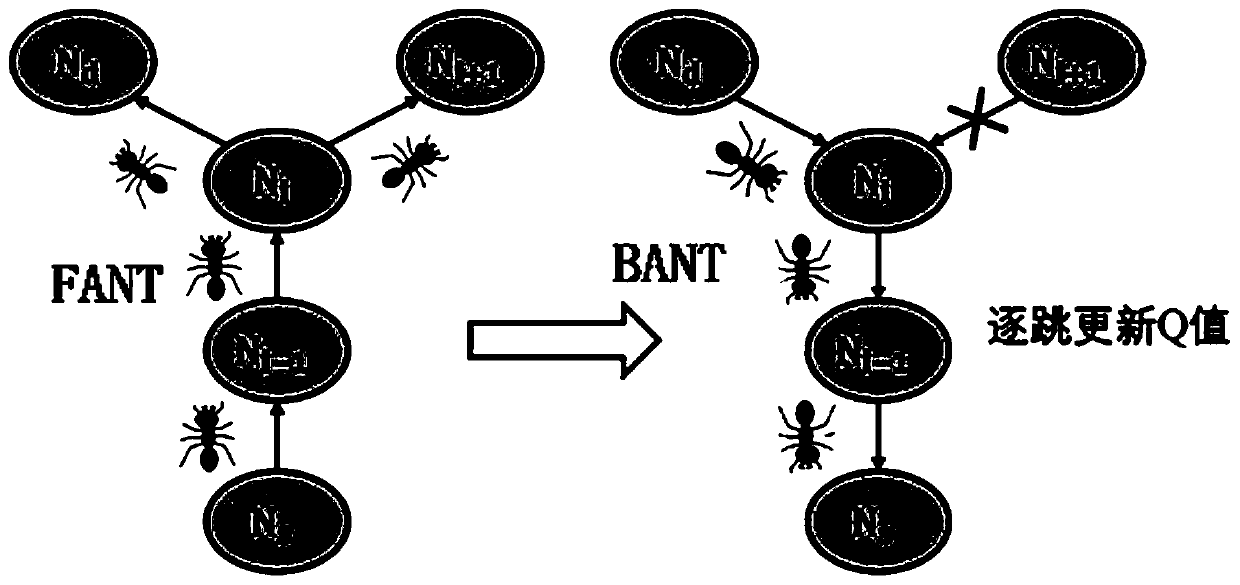Underwater multi-agent-oriented Q learning ant colony routing method
A multi-agent, ant colony algorithm technology, applied in electrical components, wireless communication, network topology, etc., can solve the problems of unstable link, poor adaptability of dynamic topology, etc., and achieve the effect of good convergence speed and robustness
- Summary
- Abstract
- Description
- Claims
- Application Information
AI Technical Summary
Problems solved by technology
Method used
Image
Examples
Embodiment Construction
[0042] Preferred embodiments of the invention are described below with reference to the accompanying drawings. Those skilled in the art should understand that these embodiments are only used to explain the technical principles of the invention, and are not intended to limit the protection scope of the invention.
[0043] It should be noted that, in the description of the invention, terms such as "upper", "lower", "left", "right", "inner", "outer" and other indicated directions or positional relationships are based on the terms shown in the accompanying drawings. Orientation or positional relationship, which is only for convenience of description, and does not indicate or imply that the device or element must have a specific orientation, be constructed and operated in a specific orientation, and thus should not be construed as a limitation on the invention.
[0044] In addition, it should be noted that, in the description of the invention, unless otherwise clearly stipulated an...
PUM
 Login to View More
Login to View More Abstract
Description
Claims
Application Information
 Login to View More
Login to View More - R&D
- Intellectual Property
- Life Sciences
- Materials
- Tech Scout
- Unparalleled Data Quality
- Higher Quality Content
- 60% Fewer Hallucinations
Browse by: Latest US Patents, China's latest patents, Technical Efficacy Thesaurus, Application Domain, Technology Topic, Popular Technical Reports.
© 2025 PatSnap. All rights reserved.Legal|Privacy policy|Modern Slavery Act Transparency Statement|Sitemap|About US| Contact US: help@patsnap.com



